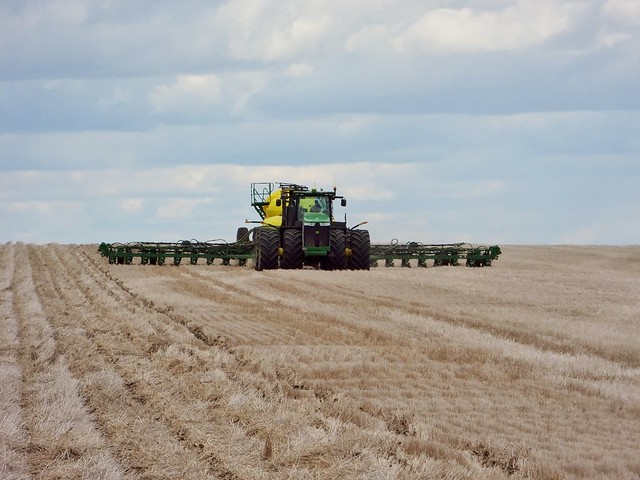
Increasingly, food companies, environmental organizations, and agricultural commodity groups are setting ambitious goals to reduce greenhouse gas (GHG) emissions from farms. These goals are realized through conservation practices such as reduced tillage farming, and precision technologies, like autosteer tractors. Yet, there’s not much nationally consistent data to help farmers and policymakers know which practices are being used, and how the adoption of those practices is changing over time.
In a new report, USDA is offering consolidated data on ten years’ worth of GHG-reducing conservation practices in the United States. Agricultural Conservation on Working Lands: Trends from 2004 to Present (PDF, 7.6 MB) combines USDA survey data to track adoption of practices including precision agriculture technologies, nitrogen management, no-till and mulch-till, and cover crop adoption, all of which reduce GHG emissions and/or store carbon in the soil. The report focuses on conservation practices for three major crops: corn, soy, and wheat, and reports trends by region and farm size. The report notes that these practices result in additional benefits, such as reduced production costs, increased yields, and improved soil and water quality.
As one example finds, the report looks at the increasing popularity of autosteer technology (tractor guidance systems using GPS). This practice requires a GPS system, software, and hardware. Autosteer has been widely adopted. For corn crop farming alone, autosteer use jumped from 13 percent in 2005 to 56 percent in 2016. The benefits are many: autosteer has been found to improve efficiency, save money, reduce operator fatigue, improve seeding of field row crops, and reduce both fuel use and over-application of nitrogen fertilizer.
The report gathers several USDA survey datasets on food production and conservation practices. These surveys usually focus on a particular location or crop in a single year and, until now, the conservation-related data they collected were not reported in one place. This made it difficult to develop a complete picture of conservation practice adoption across the farming sector and over time. Data sources include the Economic Research Service and National Agricultural Statistic Service’s Agricultural Resource Management Survey (ARMS), and the Natural Resources Conservation Service’s Conservation Effects Assessment Project (CEAP). The resulting statistics provide a more complete picture of conservation adoption practices across the farming sector.
Ultimately, this report and collected data can help public and private sector organizations develop more effective strategies to increase future adoption of these conservation practices.



